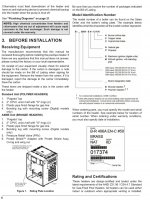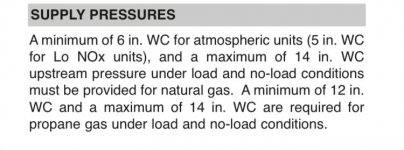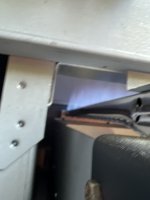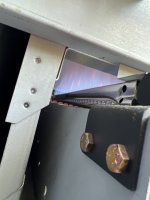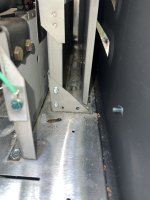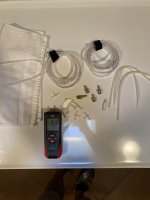Just had my Jandy Laars replaced which worked great for 15 years until LCD display went out. Had a new RayPak installed all went fine we ran the heater for about 30 mins produced heat, no noises. Went to fire it up last week and within about a minute it was haunted harmonic sounds. Ive gone through everything that Ive researched. Have great water flow have back washed cleaned filters. Yes variable speed but running it at full. 1 3/4 HP 1.5" PVC. I had the installer come out we looked at universal governor and did temp test and it moved. The gasket was twisted so got it back on square with plumbers silicone. It may have improved slightly but had him order new UVG and gasket just to be sure. When my gas line was being tested prior to install they said I had very good high PSI and could run a bunch of these units. As part of my diagnostics I went to the manual shut off on gas line and slowly turned it down to a point the noise went away, still producing heat (not sure if enough) did not get any flame errors or anything on LCD to say there was an issue. The second thing I tried was to go to one of my fill lines to the pool and slowly shut the valve and that also worked but I could hear my pump straining.
So I'm wondering when I replace the UVG and does not improve would you then take a manometer the the regulator to double check that PSI is in range. Im very confident its not a pump flow issue. The interesting thing is it ran great its first 30 mins of life then week later this started. The noise is not soft and loud and annoying. I understand it comes from steam being generated in the copper coils and not enough water feeding the rate its burning. Needless to say we are not using the heater just to be safe that I don't cause further problems. Any suggestions would be appreciated. Thank you!
So I'm wondering when I replace the UVG and does not improve would you then take a manometer the the regulator to double check that PSI is in range. Im very confident its not a pump flow issue. The interesting thing is it ran great its first 30 mins of life then week later this started. The noise is not soft and loud and annoying. I understand it comes from steam being generated in the copper coils and not enough water feeding the rate its burning. Needless to say we are not using the heater just to be safe that I don't cause further problems. Any suggestions would be appreciated. Thank you!


